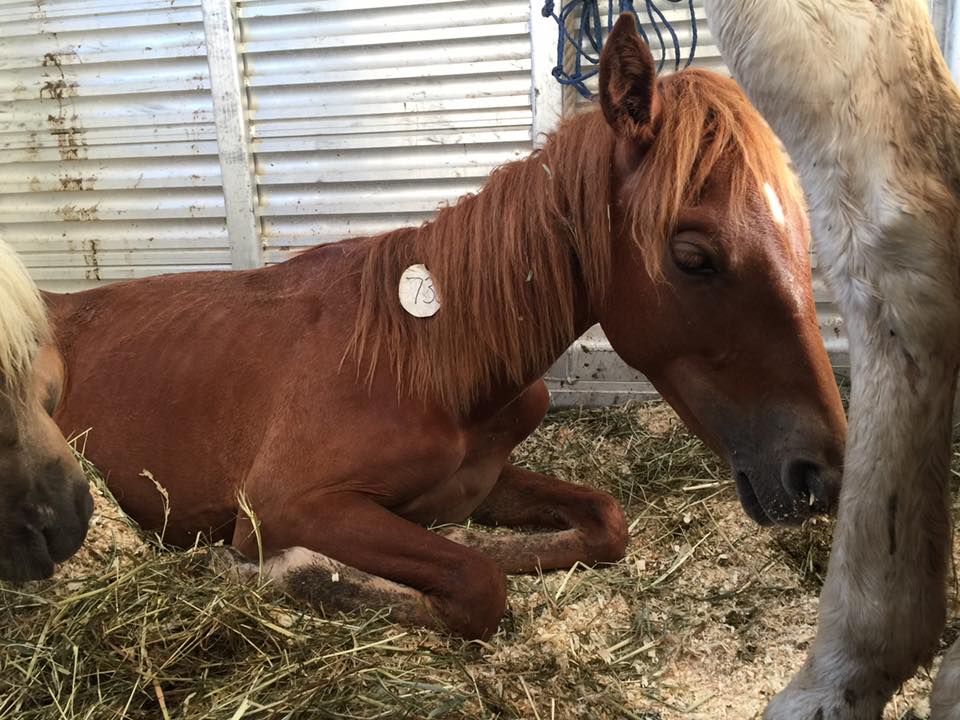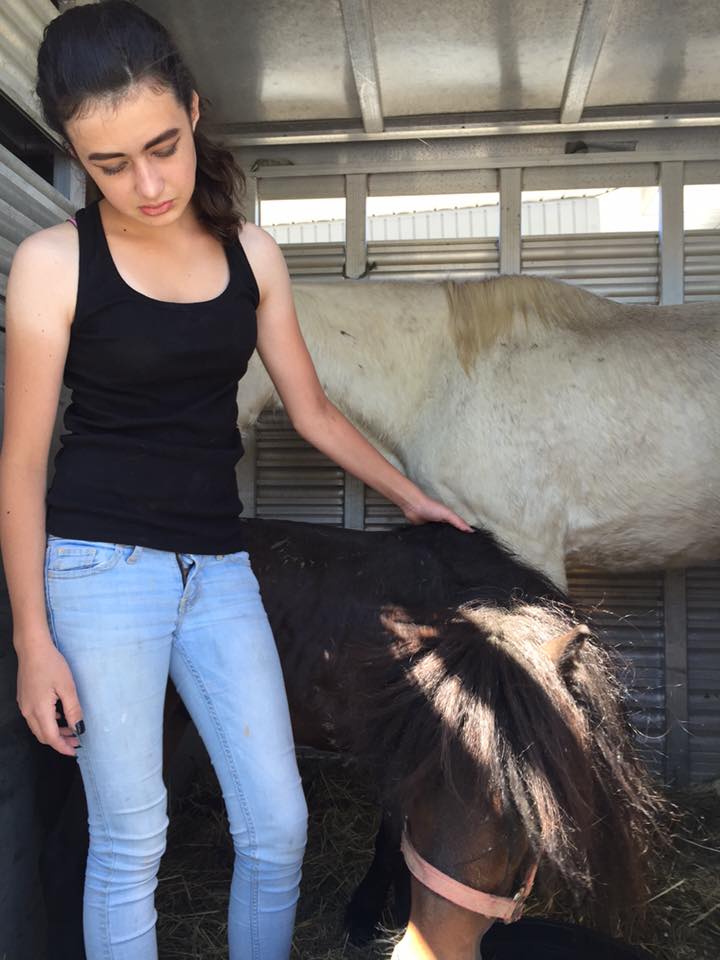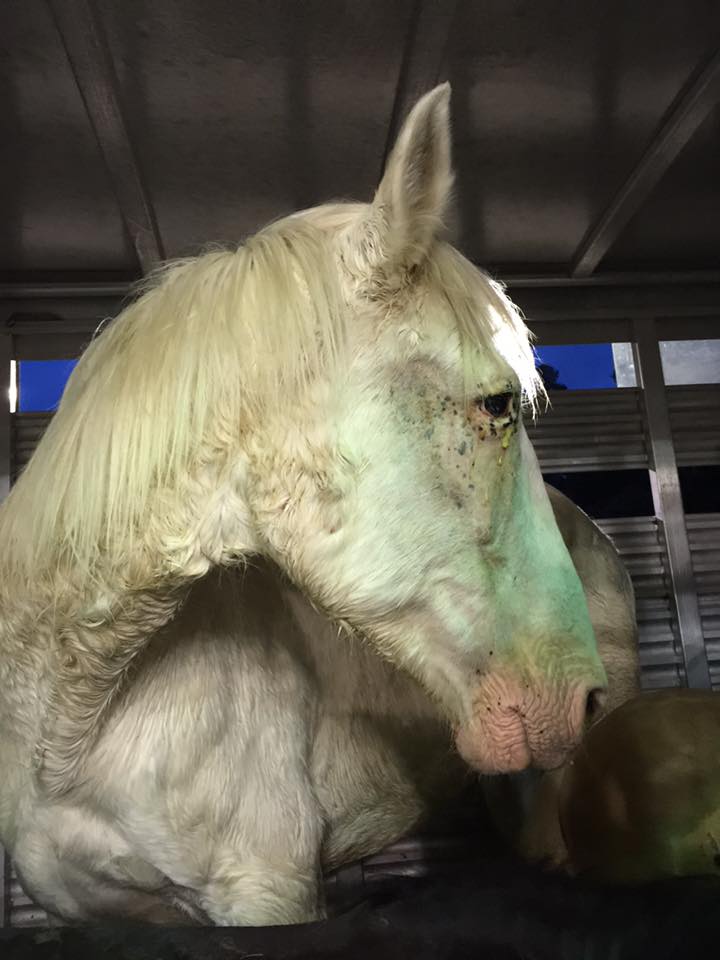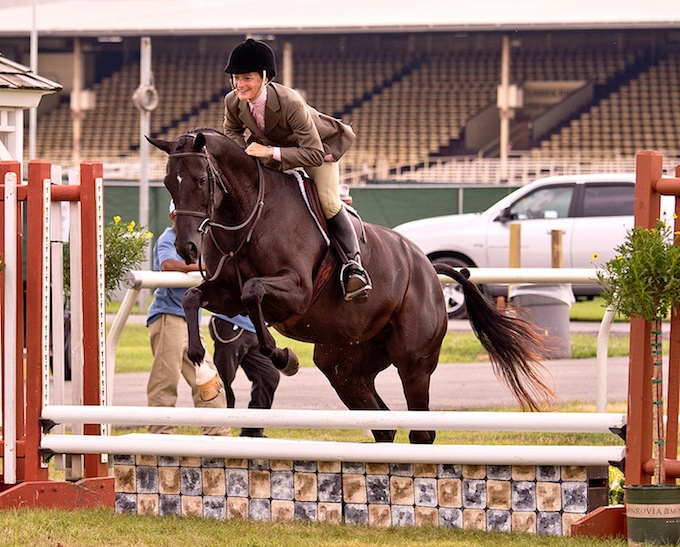
Kay Hanlon Myruski and her 12-year-old daughter Emma rode from New York to Louisiana, and back, to save 8 slaughter-bound horses.
A New York woman and her 12-year-old daughter drove over 3,000 miles, running on fumes and stolen cat-naps, to rescue eight horses from the Bastrop Kill Pen in Louisiana.
Stepping up last week to do the long-distance haul after plans fell through with their shipper, Kay O’Hanlon Myruski and her 12-year-old daughter Emma drove from their home in Goshen, N.Y. to pick up a large horse trailer at Gerda’s Animal Aid in Vermont, before driving south through blistering heat and difficult conditions, all in the name of saving horses who would otherwise ship to Mexico to be slaughtered.
“It was a no brainer,” says Myruski, a longtime Thoroughbred advocate and horse rescuer based in Goshen, N.Y.
With only four hour’s notice that shipping arrangements for the assorted mix of horses had fallen through, she and her daughter jumped in the truck last week to drive 3,000 miles round trip in an odyssey fraught with problems.

It was so hot in the trailer that Kay was forced to smash out the windows with a hammer. And horses were doused with water every two hours.
The pair swung into action after Gerda’s Animal Aid, on which Myruski serves as a board member, initiated a rescue effort to save a seven-month-old filly. After the filly was purchased, arrangements were soon made to save seven more horses, including a beautiful pair of white driving horses, a Tennessee walking horse, a Standardbred and some minis. Because the Bastrop Kill pen no longer sells Thoroughbreds to rescue organizations, none were obtained on this trip, Myruski says.
“It’s getting harder and harder to get these places to open their doors” and allow rescue workers to intercept Thoroughbreds in the slaughter pipeline, she adds.
By all accounts, this was a hard journey. Besides the gut-wrenching experience of leaving behind Thoroughbreds, and knowing that as quickly as eight horses were saved from the pipeline, their places would soon fill with other horses, the journey in and out of the sweltering south was plagued with problems, she says.

Emma, 12, has saved many horses with her mother. But this was the longest trip she has made.
As soon as they crossed into Ohio, the pair was delayed when they were forced to stop to get malfunctioning trailer lights repaired. And when they finally rolled into Louisiana, temperatures and humidity were so high Myruski says, “You’d break a sweat if you bent over to tie your shoelace.”
It was so stifling in the trailer that in desperation Myruski broke the windows with a hammer in order to get cross ventilation, she says.
And after the horses the horses were loaded and they were en route home, the heavy trailer burst a tire, forcing them to backtrack to make repairs.
“The tire dealer didn’t want to do it. So I pretty much begged. I explained that I had eight horses on board, and a 12-year-old daughter with me. I pleaded and the man finally agreed,” she says.
When they finally got back on track, Myruski and her daughter worried because the sweating, scared horses refused to drink from water buckets. “It is so true that you can lead a horse to water but you can’t make him drink!” she notes.
Stopping every two hours for fuel, the pair poured buckets of water on the horses to cool them down. And just when they worried that the animals would become completely dehydrated, they slowly started to drink. And by the time they made it to a quarantine farm in Virginia, the herd had downed 250 gallons!

This horse was nicknamed the “babysitter” because he could keep the others calm.
Each horse is now doing well, according to Gerda Silver, head of Gerda’s Animal Aid, and the organizer of the rescue.
She notes that the young filly that started the whole effort has been officially adopted, and that every horse will have a place to go, whether to a foster farm, or stalls in Vermont.
“Normally we’d never try to do something like this. But, I had some really good adoptions recently, and miraculously I had the room to take in more horses,” Silver says. “And we’ve got this network of people to help. We have a friend in Virginia, a Navy veteran, who wants to open a facility, and she’s planning to keep some. We have some minis who are going to Long Island to be gelded and fostered, and we already have people interested in adopting the others.”
But the three-day rescue effort, which concluded over the weekend, was bittersweet, the women say.
“The saddest thing, for me, was that when Kay drove away from the lot, she looked in the rearview mirror and she saw the most beautiful Thoroughbred still standing there. It’s the ones you can’t help that really make you cry,” Silver says.
Myruski agrees.
“For as many as we take, the slots of those saved horses are immediately filled with many more” slaughter-bound horses,” Myruski says. “I don’t blame the dealer or the holding pens. I blame all the people who send their horses there, and the ignorant backyard breeders. We’ve just got way too many people producing horses.”






